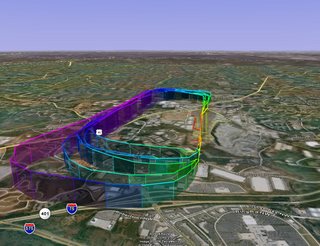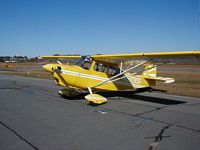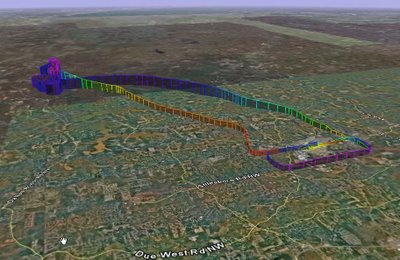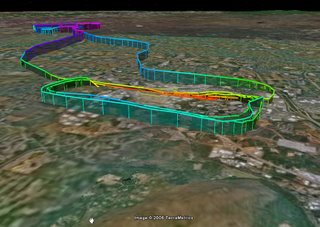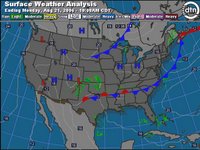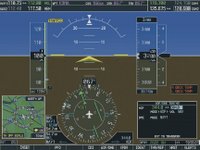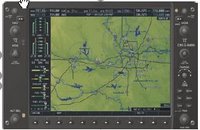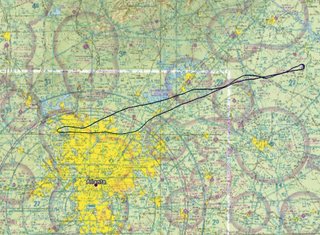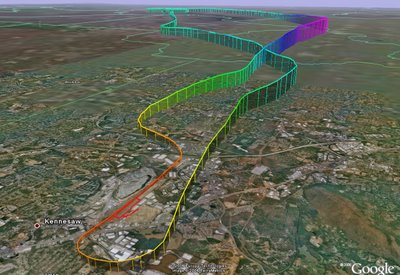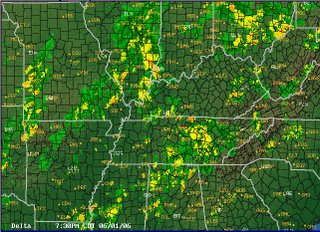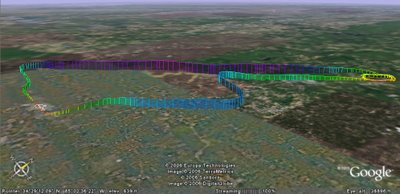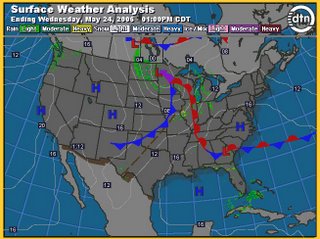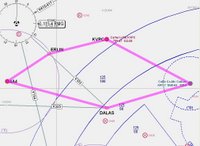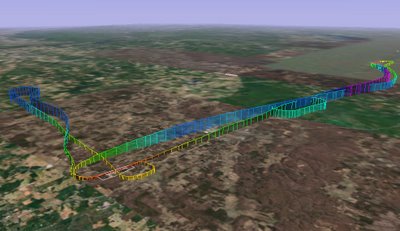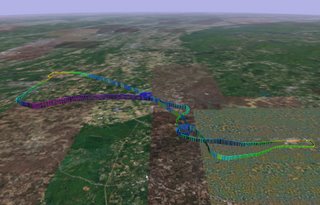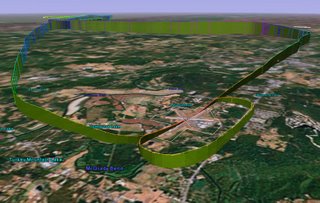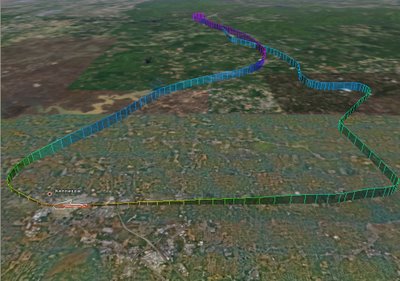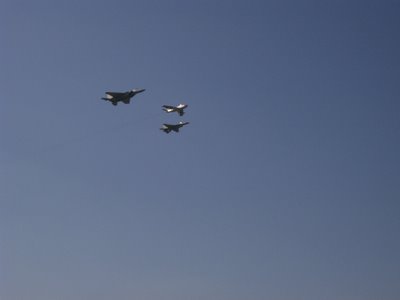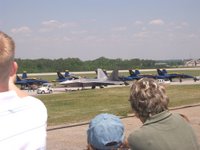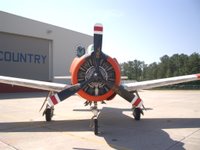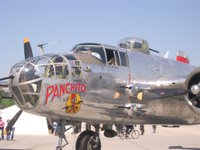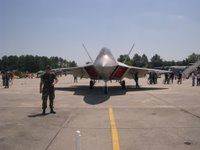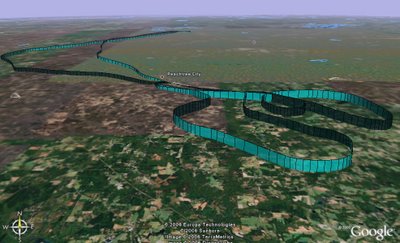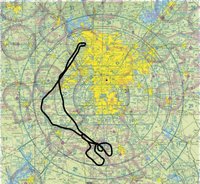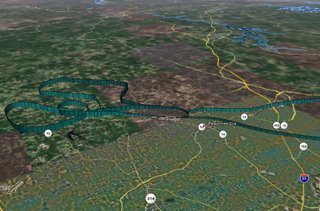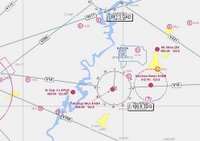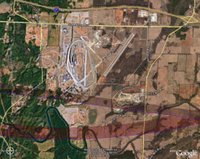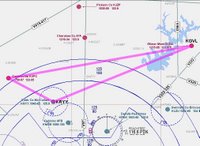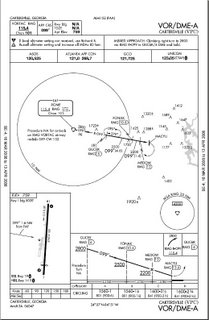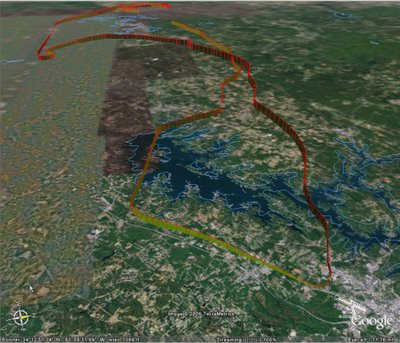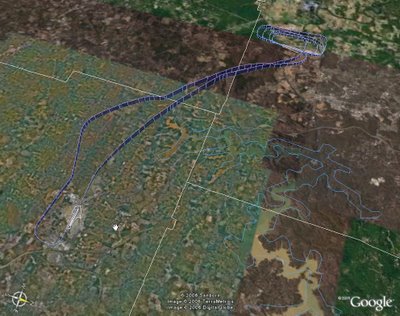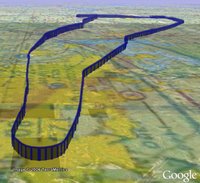
My flying partner put together a list of objectives to consider when planning our flights. He summed it up this way:
So we have three categories of flying:
I. Fun Cross Country
II. Instrument Approach Hopping
III.Busy Cross Country with Instrument Approaches.
After the serpentine approach I flew last week into KPLR, I decided I really need to work on II. The objectives of this flight were 1) basic airwork and 2) simulated instrument approaches.
We both arrived at the airport at 4:00pm local, after a rather stressful day at work. Conference calls, email, phonemail and powerpoint presentations were still unanswered and incomplete, and I was weary from the confrontations and compromises made throughout the week. I sensed he felt about the same. However, there is just something refreshing about preflighting an airplane on a beautiful Springtime afternoon that helps to melt the real world away.
The plan was for him to take the first leg, do the ILS at KRMG to a low approach, then the ARC/GPS at C22 to a full stop. There we could switch seats and I would take us east to 47A for a GPS low approach, and finally vectors for the ILS back home to KRYY. Nothing new here, we had both flown these approaches before. Weather was not predicted to be a factor.
Preflight was normal except for one point. The plane had just come back from a previous flight, and when I checked the oil it was down around 4. I had another quart put in. I was told that I should have considered that there was still oil in the engine and that this was probably an overfill. Well, maybe. It may have put me over 6, but definitely under 7.
Taxi, runup and takeoff were all normal. He had his foggles on before passing 2000 and climbed on course to 4500. There was a broken level above us at about 8000, little bumps in the air and smog/smoke drifting in from the west. We also had an annoying 'tornado' in the airplane due to fact that we couldn't close an air vent.

His first chore was to track inbound to the VOR, then enter holding for the procedural turn. Rome isn't that far away from Cobb County, so he was kept busy with checklists and instrument procedures while I looked for traffic and checked in with the other folks using the VOR and landing pattern. He got a little behind the airplane trying to do his 'Ts' and 'AMICEATM' but overall flew a pretty good approach down to mins. We could have made the landing.
Missed there (carefully watching for cross traffic) and climbed back to the VOR. Opposing traffic was inbound to the field and the smoky haze made seeing him difficult. We passed well clear, no factor. Next setup was for the GPS into Centre Municipal in Alabama. The IAF happens to be about a mile Southeast of Cedartown, so I was glad for the silence on CTAF. I didn't want to be in the middle of a shower of Skydivers.
He used the GPS as primary and backed it up with the VOR. The arc went very well and he rolled out nicely on course. As we traveled the 15 miles to the airport, we both noticed a discrepancy in the needles. The VOR had us right of course, while the GPS had us dead on. I advised him to stay with his primary. Haze obscured the field until about 5 miles and at that point I knew that the VOR was giving a better indication. (I would have expected the GPS to be more accurate.) When he took the foggles off at mins he was forced to do some "fancy footwork" to set up for the landing. He concluded with a nice landing.
Time = 1.5

C22 is just a little field about a half mile from nowhere. Nestled away just on the other side of Weiss Reservoir, its the home of about a half dozen airplanes and is (I believe) a rest stop for the local arm of the airborne State Patrol. An old building with a head and not mush else. Sprint service was not available.
We stretched our legs and switched positions (headsets, flight bags, etc.) and I got my foggles and approach plates ready. My copilot checked the oil, seemed to be OK. So we jumped in and started her up. Everything looked good so I made the call to back taxi on 27. This was something new for me as I haven't had many opportunities to take off from small fields like this in a long time. It was only after I had gotten to mid field that I thought about the run up. Hmm. Well, I took position and just did a 'quick' run up before takeoff. No other traffic around so this was probably OK, but in the future I'll do it before taking the active. Also, doing anything 'quick' requires extra vigilance. It opens up all sorts of opportunities to miss things.
Takeoff and climb out on course normal. Local brush fires only made the haze worse, but we were flying east now so the visibility wasn't quite so bad. I leveled at 3500 direct to the RMG
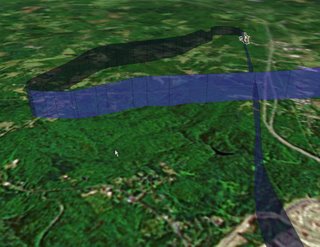
VOR. That acts as a feeder fix for the GPS RWY 4 Cherokee County. Airwork and procedures were good. I really felt "on" with enroute procedures and airwork. Maybe a minor 'flub' or two enroute on the radios, but overall I flew up to my standards.
The approach went well, although my copliot thought I was a bit high on final. It was hard for me to tell as I had foggles on and by now it was night time. He told me that the '5 clicks' worked and as I neared the final waypoint I executed the missed. I was very comfortable with course control.
Next task was to prepare for the ILS at RYY. I climbed up to 3000, roughly heading East and dialed up Comm 1 to talk to ATC. We were assigned a squawk and told to fly south while he tried to find us. AMICETAM complete, radar contact and vectors to the final approach course. However he allowed us to pass through the localizer before the final vector to intercept. This is when having a GPS is so helpful for situational awareness. We both caught it, but it was great to have it confirmed by the 430. Just as I was approaching the FAF he called to have us turn north to allow closing jet traffic to pass. Actually this was good news since I wanted to fly this one on speed rather then sprint down the glideslope. Vectors back around and we were once again ready to go.
This was one of those few times when I was 'wired' to the gauges. The needles were dead centered on the donut, speed was good and rate of descent was just about 500 fpm. Corrections were minor and seldom did I get outside the ring...until about 500 feet above DH. Bing(1), the course needle jump about 3 points to the right! This was NOT me! Copilot said he was watching the airplane move left of centerline, but the needle was dead on centered until the jump. I made the correction, completed the checklists and made an 'OK' night landing.
Back at the school we asked a CFII about it, and he verified that I had VLOC selected, no red flags, etc. We'll play with it now to see if it can be reproduced. The good news here is that I'm very comfortable it wasn't my airmanship.

C172p
Time = 1.3
This was a big confidence builder. Airmanship is getting back to where it should be, procedures are becoming natural. I Still have a way to go, and am learning more about 'practical' flying every flight, but I'm finally comfortable.
*Good news: I learned that there is a good chance that a Tiger will be back in the fleet soon! While I have learned to enjoy the 'high wing wonder' I'm anxious to get back into a Grumman.

